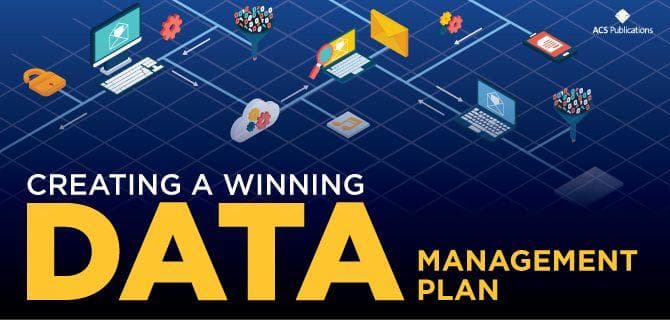More and more, funders are requiring that researchers include data management plans in their proposals. Data management plans are critical components to such requests, as they describe how data are collected, organized and stored for a study, and how to access the data when the study is complete. We have put together some tips on […]

More and more, funders are requiring that researchers include data management plans in their proposals. Data management plans are critical components to such requests, as they describe how data are collected, organized and stored for a study, and how to access the data when the study is complete. We have put together some tips on how to strengthen your data management plan, as this is a key legacy for your research.
Include as Much of Your Project’s Output as You Can
Your research project is going to yield a great deal of information. You may think you only need to include the NMR graphs, but your funder may want more. It’s a good idea to include anything that is produced by your project, such as raw data, software, and spreadsheets.
Be Specific About Where the Data Comes From
Funders like to know about the source of your project’s data. If you are using publicly available data, provide a link to the data set. If the data comes from somewhere else, specify the source; if you plan to reuse data sets, clearly outline its property rights licenses. Make it clear who the owner of the data is, and demonstrate that you have permission to use it in your project. If you are collecting the data yourself, explain what you will collect and how you will get it.
Outline Your Organization Plan
Now that you have outlined what and how much data you are going to collect, it is time to explain how you plan to organize and manage it. Smaller data sets can be managed with spreadsheets in commercial software, while larger ones may require relational database management systems. The project may end up generating data in unforeseen ways, but having a broad organizational plan will help you stay on top of it.
Have a Plan for Metadata
Metadata—sets of data that have information about other data—is an essential part of scientific research. Descriptive metadata must be comprehensive if the data gathered are to be used again by other researchers. Your data management plan should outline the minimum amount of metadata needed to ensure your data are reusable. You will need to define what elements, at the very least, your metadata will contain. You should also outline how you plan to record the metadata and what standards you will use in your documentation.
Don’t Forget Curation
In your plan, outline how you will curate your data. Which data repository will you use? Data repositories, such as SPECTRa, Chempound, and Figshare, are designed for long-term data storage, but can differ in how data or files are deposited, accessed, or identified. Will your project have a website? If it does, how will the website be maintained? Who is going to take care of your data throughout the data life cycle?
Think Long-Term
When your project is over, what happens to the data you collected? Think about how you are going to maintain it so that others might use and learn from it. You should explain how you plan to share, and how others can access, your project’s data. Sharing data will maximize your research investment while helping to further other scientific discoveries. Your plan should cover exactly how you will preserve it in the long term.
You must also outline how you will prevent data from being lost. Make a plan for where digital data will be stored and backed up, and how many copies will be made. Another long-term concern for digital data is security. Research data may contain identifiers to subjects, so steps must be taken to limit the disclosure risk in the digital data. It is a good ideal to include an explanation of how you will keep your data secure during the data life cycle.
Whether you are designing your very first data management plan or your 101st, we hope these tips will help you deliver a stronger plan to your funders, and help you stay more organized and prepared for the long-term uses of your research data.